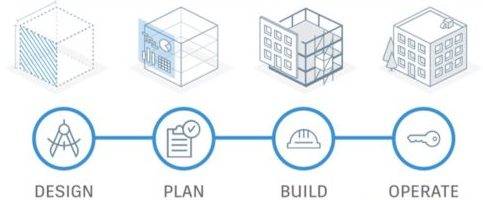

The project implementation plan (PIP) is the master plan that consolidates and summarizes all plans to be performed for implementation of the project. It describes the project's purpose and the tasks and resources required to achieve construction completion.
Construction procurement is when the building materials are acquired, the shell and core elements constructed, the systems installed, and the building made ready for fit-out. Fit-out takes place when the furniture, fixtures & equipment (FF&E), operating supplies & equipment (OS&E) and IT system are produced, supplied and installed.
Practical completion (PC) is when the works in a development project have been completed according to the construction contract, except for minor omissions. When practical completion of construction is achieved, the certificate of occupancy is issued for final acceptance.
The warranty period starts when a certificate of practical completion is issued. One of the roles of the construction project manager is getting the certificate of occupancy or certificate of practical completion from the third-party commissioning agent for the warranty review and final acceptance.
A certificate of occupancy (CO) documents that a building complies with applicable building codes and other laws, is suitable for occupancy and technically, operationally and commercially ready and authorized to operate. Alternatively, a temporary certificate of occupancy (TCO) may be issued before completion of construction and final acceptance provided a certificate of practical completion has been issued.
Municipalities are increasingly making green certification a prerequisite for the issuance of a certificate of occupancy. This is to ensure that projects denied certification can bring suit against the architect and contractors to recover damages and additional costs incurred to achieve compliance.
